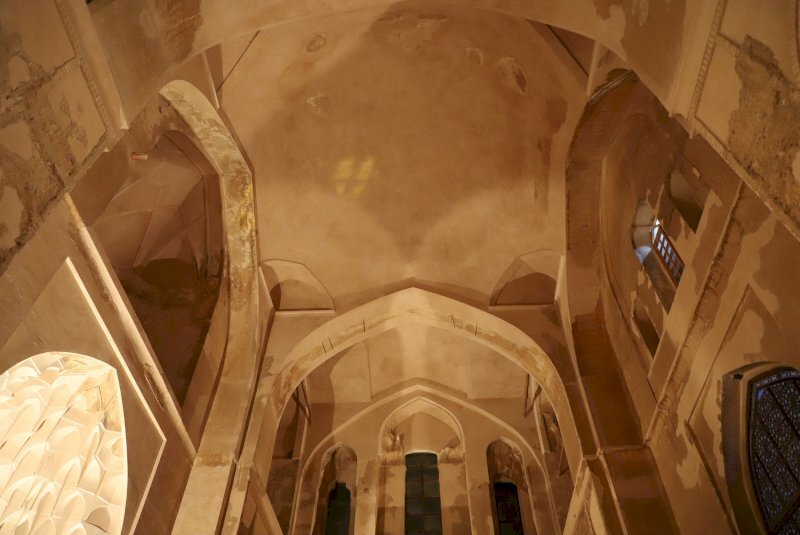Torbat Khaneh Hall, a holy place inside UNESCO-tagged Soltaniyeh Dome

TEHRAN–Torbat Khaneh Hall is a holy place inside the UNESCO-tagged Soltaniyeh Dome in northwestern Zanjan province.
Located in the southern part of the dome, Torbat Khaneh was built using soil from the holy cities of Najaf and Karbala, which were transferred to Iran during the Ilkhanid era.
Moreover, verses of the Holy Quran were written on the walls of the hall by the Torbat (grave dirt) of Imam Hussein (AS), a grandson of the Prophet Muhammad (PBUH), and that’s why it is known as Torbat Khaneh.
The structure has a very beautiful mihrab - a semicircular niche in the wall of a mosque that points out the qibla, the direction of the Kaaba in Mecca- on the south side wall, which was built and added to shortly after the construction and completion of the dome, according to archaeological findings.
There are three arches on the roof of Torbat Khaneh, and the building has actual dimensions of 17.6 meters long, 7.8 meters wide, and 16 meters high.
Inscriptions in Kufi and Thulth can be seen all over the walls.
Tiling, featuring Arabesque motifs, is another decorative element found around Torbat Khaneh’s main door. Tiles in this section have designs that will attract every viewer’s attention. The tiles demonstrate the high ability of Iranians in the art of tiling as they have glazes in white, azure, and turquoise colors with mosaic techniques. Moreover, hexagonal geometric tiles have been used to create lovely flower patterns with gold enamel colors.
The 14th-century Gonbad-e (“The Dome of”) Soltaniyeh is highly recognized as an architectural masterpiece, particularly due to its innovative double-shelled dome and elaborate interior decoration. The very imposing dome stands about 50 meters tall from its base. Covered with turquoise-blue faience tiles, the stunning structure dominates the skyline of the ancient city of Soltaniyeh.
Meaning “Town of the Sultans”, Soltaniyeh was briefly the capital of Persia’s Ilkhanid dynasty (a branch of the Mongol dynasty) during the 14th century.
The monument is, in fact, the mausoleum of Oljaitu, also known as Muhammad Khodabandeh, who was the eighth Ilkhanid dynasty ruler from 1304 to 1316.
According to UNESCO, the mausoleum’s interior decoration is so outstanding that scholars, like A.U. Pope, have described the building as “anticipating the Taj Mahal.”
The UN cultural body has it that the Mausoleum of Oljaitu is an essential link and key monument in the development of Islamic architecture in central and western Asia. The fairly large dome is the earliest extant example of its type in the country and became an important reference for the later development of the Islamic dome.
ABU/AM
Leave a Comment